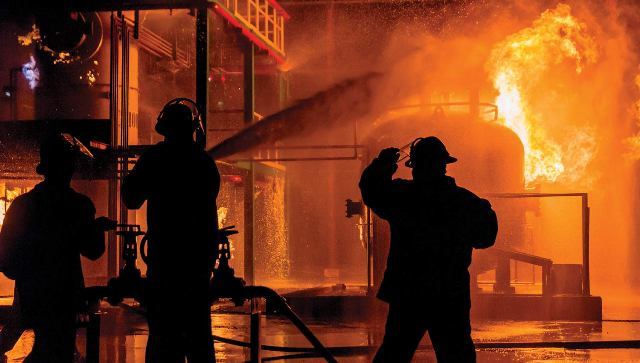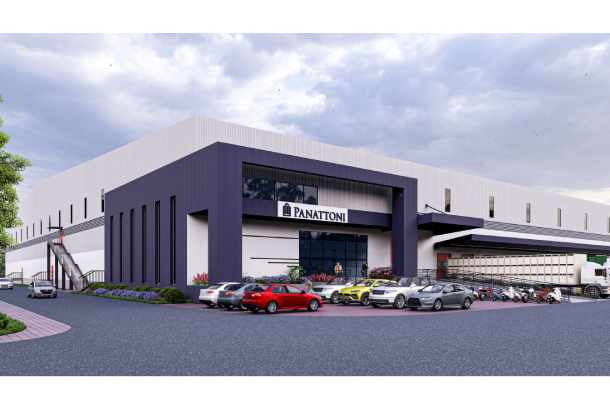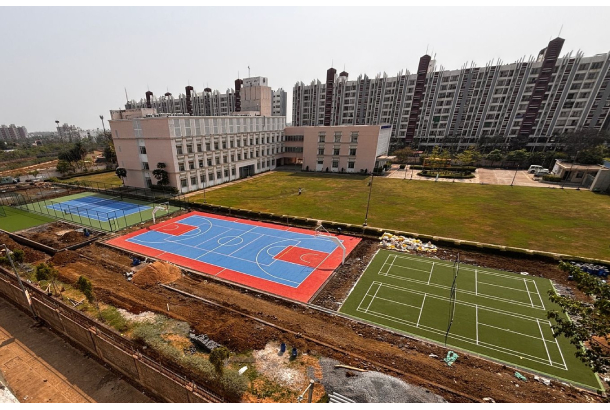by Gopi TM, Director – Sales & Marketing (Middle East, Asia & Oceania), Vetrotech Saint-Gobain
In the ever-changing world of construction, where innovation shapes city skylines and technology defines neighbourhoods, one thing remains constant: the need to protect lives. Despite the advancements in engineering and design, fire remains a silent threat in the background. To combat this danger, the most critical elements are thorough testing as per the correct standards in an internationally accredited fire test laboratory. Let's delve into this critical area where ensuring safety isn't just a responsibility—it's a testament to progress.
Understanding the science of fire safety and fire protection in buildings
Fire safety is a science rooted in rigorous testing. Building materials, construction methods, and fire protection systems undergo meticulous assessments to ensure they perform in real fires. Innovations like computational fire modelling simulate fire behaviour in buildings, offering valuable insights swiftly and efficiently. These advancements revolutionize the field, providing a deeper understanding of fire dynamics and enhancing overall safety measures. The 3 major goals of Fire safety or Fire protection are Life safety, property protection and continuity of operations.
Buildings are and need to be designed to offer an acceptable level of fire safety and minimise the risks from heat and smoke. In structures, the owners and operators are responsible to maintain their facilities in accordance with a design basis that is rooted in laws. All buildings shall be constructed in accordance with the building code of that specific country that is in effect, where the provisions for safe evacuation of people from the building in the event of fire while simultaneously compartmentalizing the fire from spreading is well detailed.
The foundation of safety: Understanding passive fire protection
Passive fire protection integrates structural features and materials into buildings to contain fires, smoke, and toxic fumes. Unlike active systems, such as sprinklers and alarms, these solutions are built directly into the structure itself. Features like compartmentalization and fire-resistant materials provide crucial time for safe evacuation and aid rescuers. This saves lives, reduces property losses, and often lowers insurance premiums, making it a wise investment for safety and financial reasons.
While active fire protection systems garner attention, passive fire protection operates silently yet effectively. This vital component serves as the first line of defence, mitigating the spread of fire, smoke, and toxic gases without relying on human intervention.
Key elements of passive fire protection include fire-resistant walls, floors, and ceilings, along with fire doors and specialized coatings.
- Fire-resistant walls and floors: These barriers compartmentalize the building, preventing fire and smoke from spreading rapidly, allowing precious time for evacuation.
- Fire doors: These doors maintain their integrity for a predetermined period, providing safe passageways and preventing fire spread.
Essentially Passive Fire Protection is the use of integral fire-resistant wall and floor assemblies to limit the spread of fire, smoke and serve as occupancy separations. It focuses on preventing the impact of fire by creating fire resistant barriers within the building. They are also used to keep fires down, high temperatures and flue gases under control within the fire compartment of origin, thus enabling smart firefighting and building evacuation. Openings in building are the systems where attention is paid to smallest details to resist fire
Principle of redundancy & modern structural fire protection
Modern structural fire protection is based upon the redundancy principles of both Active & Passive systems.. The principle of redundancy in fire protection is a concept of incorporating backup systems and multiple layers of safety measures to ensure that a fire protection system remains effective even if one or more components fail.
Replacing a passive fire protection element with the help active fire protection system should not be recommended as some key problems have been identified in the active fire protections systems installation in the buildings such as heat detector installed near the air conditioner, damage of the alarm circuits, sprinklers mounted at a distance exceeding the applicable regulations, lack of complete hydrants, etc. The active fire protection system is a great addition to any occupancy to the existing passive fire protection. They are reliable, can help contain fires, and can save lives only in combination with passive fire protection system and not as a substitute to passive fire protection system available.
The synergy between testing and passive fire protection represents the pinnacle of building safety. Passive methods erect physical barriers against fire hazards, while rigorous testing ensures the reliability of materials and systems. This layered defence approach markedly heightens overall fire safety, shielding lives and property.
Fire safety shall be the responsibility of all passive fire protection equipment manufacturers and that shall be demonstrated by their compliance to building codes and testing standards available to verify and certify their products. Hence, Testing and certification of the passive fire protections is important for the following reasons.
- To certify the products as compliant fire resistant,
- As a research and development tool in the purpose of bettering the product and its compliance ,
- As a proof for production quality which ensures the repeatability of the performance of the product,
- To enlarge the field of application by covering different elements of passive fire protection as well covering all the multifunctionality which the product can provide.
- As a great tool to promote our products to customer
'In fire safety, preparation is the key to protection’. Hence, ongoing research, stakeholder collaboration, and increased awareness are paramount. By embracing the latest testing advancements and passive fire protection techniques, we create safer built environments for all. Together, let us construct a future where the flames of fire are met with a bastion of resilience, safeguarding lives, and property against this formidable foe.



























Follow